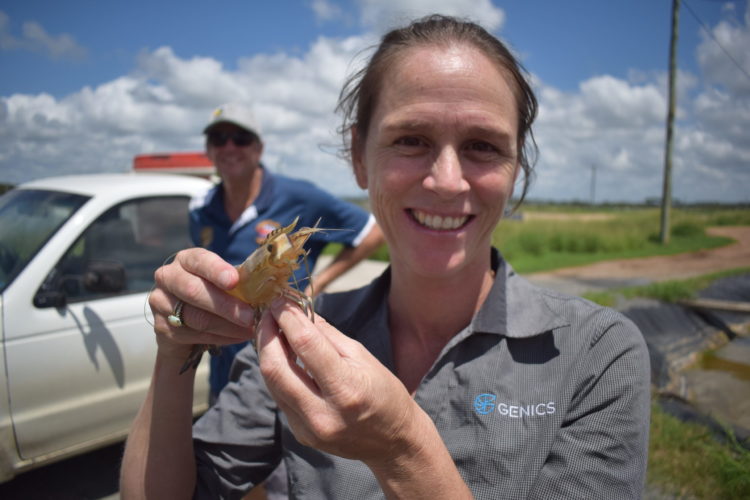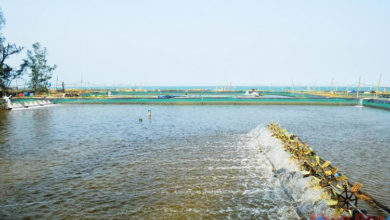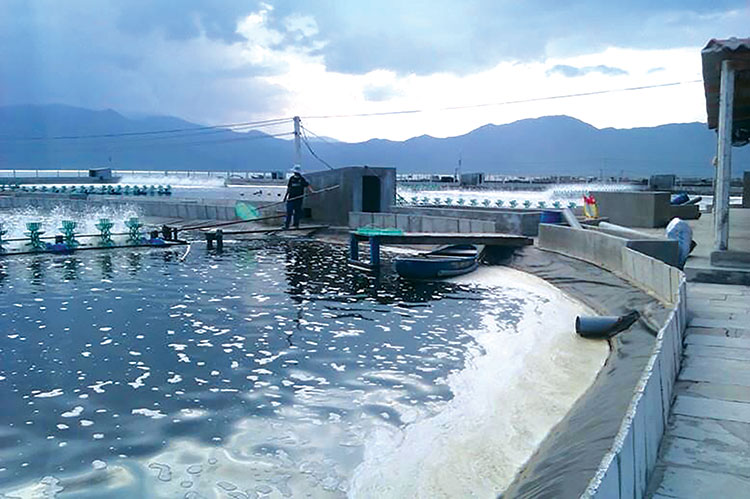Too Little, Too Late: Point of Care Testing After Clinical Signs of Disease in Shrimp
When it comes to disease management, timing is everything. Shrimp pathogens begin their destructive work long before any visible signs of illness appear. Without regular surveillance testing, it’s impossible to see it coming. By the time you do, the damage is done; the alarm bells ringing too late.
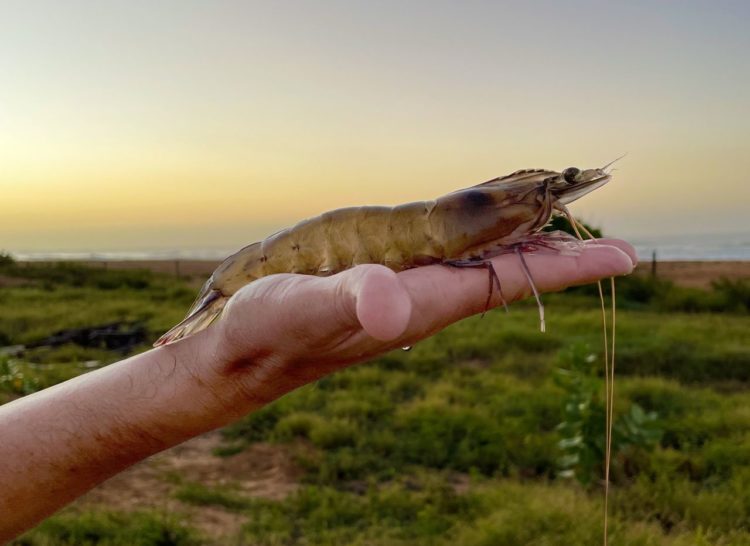
Clinical signs of disease in shrimp aren’t an effective warning sign but often an indicator that the battle against a pathogen has already been lost, with stock loss and significant profit impact inevitable. By the time shrimp get sick, the pathogen load has significantly increased and the opportunity for effective intervention may have passed. This is the harsh reality many shrimp farmers face when relying on Point of Care (PoC) testing to catch deadly diseases before they devastate entire farms.
During the incubation period, pathogens multiply and shed into the environment, increasing the likelihood of transmission to other shrimp within the farm. By the time clinical symptoms are evident, the pathogen has often spread widely, complicating control measures and increasing the potential for significant losses.
This is why detection is paramount. Identifying a pathogen at the earliest stages — before it has had the chance to proliferate — can make the difference between a contained incident and a full-scale outbreak. In high-density shrimp farms, the impact of delayed disease detection is exponentially amplified, as the close proximity of the shrimp accelerates the spread of pathogens, turning a localised infection into a rapid and widespread outbreak.
The Limitations of Point of Care Testing
Point of Care tests — including miniaturized in-house real time PCR machines with kit-based reagents, and single use test strip kits — have become widely adopted in the shrimp farming industry due to their ease of use and the rapid results they offer. These tests are often used in the field to provide quick answers when there are concerns about disease. However, while PoC tests are useful in certain contexts, their limitations must be understood, particularly when it comes to early detection and surveillance. While PoC tests might seem like the hero in the story of pathogen control, recent findings suggest that they fall show — showing up after the battle is already lost.
One of the primary issues with Point of Care tests is their sensitivity. Many of these tests require a substantial viral load (often around 1000 copies of the virus) to return a positive result. In the context of disease management, this is a significant drawback. By the time a shrimp’s viral load reaches this threshold, the pathogen may have already begun to spread throughout the population, rendering early intervention efforts far less effective.
A 2023 CSIRO study, which examined the efficacy of several PoC tests, revealed troubling findings. According to the study, these tests are not sufficiently sensitive to detect low levels of pathogens, meaning they are not suitable for early detection purposes. This is particularly concerning when considering the expectations many farmers have of PoC tests as tools for early warning and prevention. This study also subtly highlights the gap between the manufacturer claims of a test kits sensitivity as shown on the packaging and what is achievable on real-world shrimp samples.
“The lack of sensitivity of these PoC testing systems is such that it actually creates a false sense of security for farmers,” stated Dr. Melony Sellars, CEO of Genics and a leading expert in shrimp disease management.
“The CSIRO study’s findings identify vital issues with the evaluated PoC testing kits, which means that they are not, in fact, a solution for early warning and prevention of many common shrimp pathogens.
“Based on comparative laboratory data this includes WSSV and IMNV as two examples,” states Dr Sellars.
While PoC remains a useful tool for shrimp farmers, the toolkit isn’t complete if PoC tests are the only disease control method in use on a farm. Using Point of Care tests for early detection testing is like waiting until your house is on fire before deciding to buy a smoke detector or investing in a sprinkler system — too little, too late.
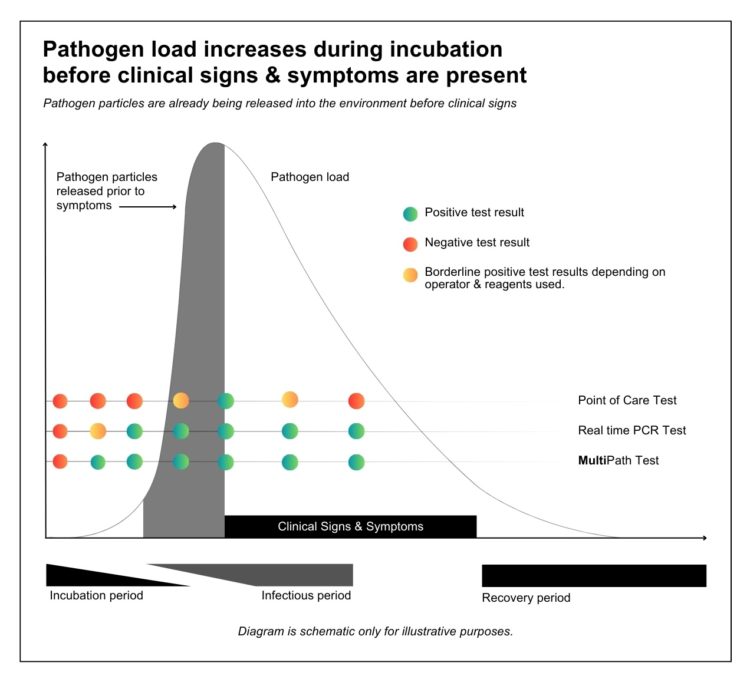
Fit for Purpose PCR Tests
So, if Point of Care tests aren’t an effective option for early pathogen detection, then what?
Different PCR tests are designed for specific purposes, and it is essential that they are used appropriately to avoid false negative pathogen tests or other inaccurate results. For example, PCR tests designed specifically to confirm clinical diseases are not necessarily suitable for early detection. Tests designed for early detection and surveillance are optimised to identify pathogens at very low levels, well before clinical signs appear.
In the context of shrimp farming, the most sensitive PCR tests, such as those endorsed by the World Organisation for Animal Health (WOAH), can detect as few as ten copies of a pathogen. Genics Shrimp MultiPath2.0, a PCR-based assay, goes even further, requiring on average only two copies of a pathogen for detection. This level of sensitivity is crucial for the early identification of pathogens and the prevention of disease outbreaks.
“Highly sensitive and specific diagnostic tests are necessary to confirm the freedom of pathogens in apparently healthy shrimp and give farmers peace of mind,” says Dr Sellars.
“This cannot be achieved with many of the Point of Care or on-farm use tests in the market simply as they are not sensitive enough when used on shrimp tissue, which contains various PCR inhibitors such as chitin.
“The reason our industry has never been able to achieve early detection and early risk mitigation, as prior to MultiPath, there were no tools that could achieve this level of accuracy and sensitivity at scale, and cost-effectively.”
If Not Point of Care Tests, Then What?
Farmers, understandably, want quick answers when their livestock’s health is on the line. However, the convenience of PoC tests comes at a price — their sensitivity, and lack of ability to detect multi-factorial infections.
Shrimp MultiPath2.0 represents a significant advancement in the field of shrimp disease diagnostics (pathogen surveillance). This technology allows for the simultaneous detection of 18 different shrimp pathogens in a single sample, providing a comprehensive overview of the health status of a shrimp population. The test’s high sensitivity ensures that even the earliest stages of infection can be detected, enabling prompt and effective intervention. Shrimp MultiPath could very well be the difference between a thriving farm and a catastrophic outbreak. Think of this technology as your smoke alarm or your sprinkler system investment, prior to a fire occurring in your kitchen – everyone gets our safe.
One of the key advantages of Shrimp MultiPath2.0 is its ability to differentiate between genetic subvariants of major pathogens. This capability is critical in managing multi-factorial pathogen scenarios, where shrimp may be co-infected with multiple pathogens. Multi-factorial pathogen scenarios are tricky to diagnose, even trickier to manage and unfortunately very common in shrimp farming.
Shrimp MultiPath2.0 doesn’t just detect one pathogen; it screens for 18, all from one sample. By providing detailed information on the presence and severity of different infections, Shrimp MultiPath2.0 allows farmers to implement targeted and informed disease management strategies. This high level of quality control is vital for making informed decisions about the health and management of shrimp populations and, ultimately, for the success of the farm.
Moving Forward: A Shift in Disease Management Practices
The findings of the CSIRO study and the demonstrated capabilities of Shrimp MultiPath2.0 highlight the need for a reassessment of disease detection practices in the shrimp farming industry. While PoC tests may still have a role to play in certain contexts, their limitations make them unsuitable as the primary tool for early detection and surveillance.
Shrimp farmers must prioritise the use of highly sensitive and specific diagnostic tools that can detect pathogens at the earliest stages of infection. This shift is not merely a matter of improving disease management; it is a necessary step to safeguard the sustainability and profitability of our shrimp farming industry.
The stakes are too high to rely on inadequate testing methods. Early detection is essential to prevent the spread of disease, and this can only be achieved through the use of advanced diagnostic tools like MultiPath. As the industry moves forward, it is imperative that farmers adopt these tools to ensure the health and success of their farms. The lesson is clear: when it comes to disease detection, sooner is always better.


